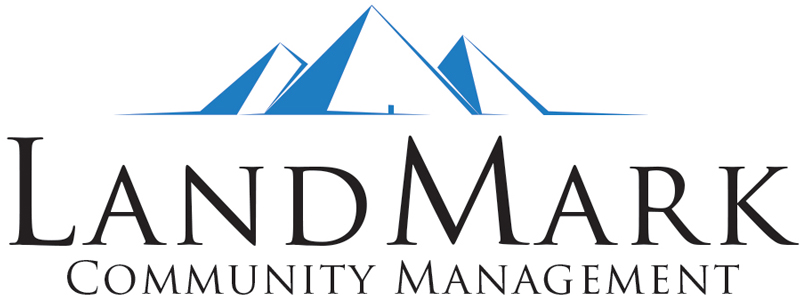HOA communication is one of the biggest sources of conflict in planned communities. It can make or break resident satisfaction and trust in the HOA board. That’s why it’s crucial to pay attention to how the HOA communicates and ensure everyone feels heard.
Best Tips for HOA Communication
What can homeowners associations do to communicate with their residents effectively? Here are some HOA and condo board communication tips to keep in mind.
1. Explain the Reason Behind Policy Changes
HOA board members often have to change the rules and policies as part of their duties. These can be unpopular and often lead to backlash coming from the residents. Hence, it’s important to explain why these policies are being enacted clearly. What purpose do they serve, and how can they benefit the community?
Explaining the reason behind the change often reduces the negative reactions the board receives. It also helps the residents understand why the change does not limit their rights. This encourages compliance and improves the people’s sense of community.
2. Break Down Policy Changes
Apart from explaining the why, the HOA board must explain the how. Residents need to know how the policy change will be adopted. They must understand how to comply when it will take force and the consequences.
Give the residents a breakdown of the changes and open the floor for questions and discussion. Allowing them to object and provide feedback is also a good idea. This way, the board can address their grievances before implementation.
Doing so will help residents know what to expect and limit the number of violations. It can also reduce unnecessary conflict arising from misunderstandings and unexpected enforcement processes.
3. Communicate Rule Changes Promptly
Part of good HOA board communication is not in the method but in the timing. The board must carefully consider how they communicate policy or rule changes. It must be clear, concise, and professional. But, they must also consider the proper timeline.
The governing documents may outline certain requirements regarding notifications on policy changes. In addition, communicating changes sooner will give the residents time to adjust and ease their burdens.
4. Assign Communication Responsibilities
Homeowners association communication can be confusing when not organized well. One board member may say one thing while another says something entirely different. Hence, assigning someone to communicate with the residents is best to limit misunderstandings and weed out false information. Assigning responsibilities also allows the board’s messages to be consistent.
Consider assigning different communication responsibilities by area of expertise. This allows staff members to lend their knowledge to the residents while addressing certain concerns and questions. For example, the board may assign someone with an engineering background to address repairs and maintenance concerns.
5. Use Multiple HOA Communication Tools

Homeowners associations shouldn’t limit themselves to one communication platform. Everyone communicates differently, and many may not have access to certain channels. Thus, it’s best to use a mix of technological and traditional communication methods to keep everyone in the loop. Consider the following methods:
- HOA Website or Resident Portal. This allows community members to access all current and relevant information regarding the HOA. It should also contain essential documents, events, and projects.
- HOA Email Communication. Emails are a great way to send updates to the governing documents or changes to the community rules. Communities may also create an HOA newsletter to inform members of upcoming events and non-urgent affairs.
- Text Message. This is ideal for sending immediate but short messages to alert members of urgent matters.
- Phone Call. Calls are great for sending emergency messages and are more secure than text messages. Automated phone calls are also an option to limit manpower requirements.
- Social Media. This is ideal for disseminating all kinds of information. Most community residents will have access to some form of social media. Facebook is the most widely used and is expected to grow in user base in the next few years.
- Direct Mail. Sending direct mail to residents is effective for residents who are not tech-savvy. They may also read these messages on their own time.
- Flyers. Posting or handing out flyers greatly increases awareness of community events, maintenance activities, and rules. But, it shouldn’t be solely relied upon as not everyone may receive or read flyers.
- Meeting Announcements. This is a convenient way to get a message across to many community members at no cost. But, some members may be absent. It’s also best paired with another form of communication, as people may forget the announcement.
6. Create an FAQ Page
Community members often ask the same questions over and over. After all, not everyone can remember or read each announcement made by the board. That’s why it’s a good idea to post an FAQ page online or through a flyer as part of the HOA community communications strategy. Consider posting questions and answers to the following topics:
- Monthly and special assessments
- Voting rights
- Meeting schedules
- Court case involvements (if any)
- Tenant restrictions, rights, and rental permissions
- Rules on pets
- Architectural guidelines
7. Create an HOA Communication Policy
Homeowners associations must keep communication and correspondence organized. It’s best to craft an HOA communication policy that the community can adopt to avoid mishaps. This will include all the community’s communication channels, how to measure efforts, and how to gain feedback. It must be shared with all board members, residents, and community managers.
8. Measure HOA Communication Effectiveness
The HOA should measure how effective its communication strategies are. This can help the board improve the community’s communication channels and methods. Consider analyzing email open rates, the number of subscribers and unsubscribers to emails and texts, and interactions on social media.
9. Get Feedback
The HOA board should periodically get feedback from the community. This can further inform them of how effectively they communicate with the residents. It can also help them spot problems and resolve issues. Moreover, asking the community members will increase their trust in the board and improve overall satisfaction. Consider using surveys or online feedback forms.
Successful Community Management
HOA communication is foundational to successful community management. It determines how well the residents understand the rules and can greatly affect their overall experience. Moreover, it can foster good or bad relationships between the members and the HOA board.
If your HOA needs help with communication problems, Landmark Community Management can help. We provide excellent management services to HOAs around Texas. Call us at 512-569-5527 or contact us online to know more!


